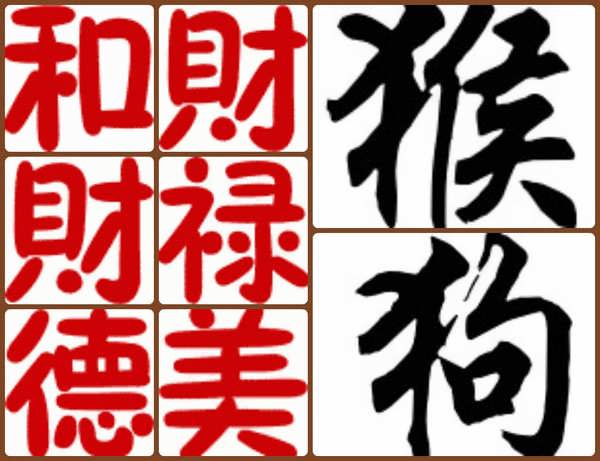The Culture of China is one of the world’s oldest and most complex cultures. The area in which the culture is dominant covers a vast geographical region in eastern Asia with customs and traditions varying greatly between towns, cities, and provinces. Most social values are derived from Confucianism and Taoism. In ancient times there were several well known Chinese symbols.
Here is our collection of Chinese symbols.
Chinese characters or symbols usually have one or more meanings, and Chinese people particularly love some of them. Here is the top ten list of the lucky ones. Please note Pinyin, which is the Chinese spelling system for the characters, is also used here. For example, fu is the pinyin for good luck in Chinese. But fu is only the phonic part of the character, and it also represents other Chinese characters that sound the same.
 Fu – Blessing, Good Fortune, Good Luck Fu – Blessing, Good Fortune, Good LuckFu is one of the most famous Chinese characters used in Chinese New Year. It is often posted upside down on the front door of a house or an apartment. The upside down fu means good luck came since the character for upside down in Chinese sounds the same as the character for came. |
 Lu – Prosperity Lu – ProsperityIt used to mean the official’s salary in feudal China. Fengshui is believed to be the Chinese way to health, wealth and happiness. If you are interested in Fengshui, you may check out the book ‘The Feng Shui Kit.’ |
 Shou – Longevity Shou – LongevityShou also means life, age or birthday. |
 Xi – Happiness Xi – HappinessDouble happiness is usually posted everywhere at Chinese weddings. |
 Cai – wealth, money Cai – wealth, moneyChinese often say money can make a ghost turn a millstone. That is to say, money really can do a lot of things. Buy Direct |
 He – harmonious He – harmonious‘People harmony’ is an integral part of Chinese culture. When you have harmonious relations with others, things will be much easier. |
 Ai – love, affection Ai – love, affectionDon’t need to say any more about this one. I just want to point out that AI is often used together with Mianzi. Aimianzi means ‘be concerned about one’s face-saving.’ |
 Mei – beautiful, pretty Mei – beautiful, prettyThe United States of America is called Mei Guo in the short form. Guo means country, so Meiguo is a good name. |
 Ji – lucky, auspicious, propitious Ji – lucky, auspicious, propitiousHope all is well. |
 De – virtue, moral De – virtue, moralDe symbol means virtue, morals, heart, mind, kindness, etc. It is also used in the name for Germany, i.e., De Guo. |
Here are the Chinese zodiac signs. These are important Chinese symbols that have deep meaning for the Chinese and many other people who are interested in horoscopes.
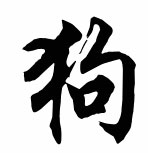 Dog – The Dog is one of the 12-year cycles of animals which appear in the Chinese zodiac related to the Chinese calendar. The Year of the Dog is associated with the earthly branch symbol. Dog – The Dog is one of the 12-year cycles of animals which appear in the Chinese zodiac related to the Chinese calendar. The Year of the Dog is associated with the earthly branch symbol. |
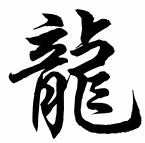 Dragon – The Dragon is one of the 12-year cycle of animals which appear in the Chinese zodiac related to the Chinese calendar, and the only legendary animal. The Year of the Dragon is associated with the earthly branch symbol. Honest, sensitive, and brave, these individuals are most compatible with Rats, Snakes, Monkeys, and Roosters. Dragon – The Dragon is one of the 12-year cycle of animals which appear in the Chinese zodiac related to the Chinese calendar, and the only legendary animal. The Year of the Dragon is associated with the earthly branch symbol. Honest, sensitive, and brave, these individuals are most compatible with Rats, Snakes, Monkeys, and Roosters. |
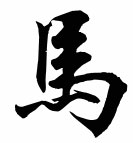 Horse – The horse is the seventh of the 12 animals that appear in the Chinese zodiac related to the Chinese calendar. The Year of the Horse is associated with the earthly branch symbol. Horse – The horse is the seventh of the 12 animals that appear in the Chinese zodiac related to the Chinese calendar. The Year of the Horse is associated with the earthly branch symbol. |
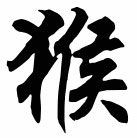 Monkey – The Monkey is the ninth of the 12-year cycle of animals which appear in the Chinese zodiac related to the Chinese calendar. The Year of the Monkey is associated with the earthly branch symbol. Monkey – The Monkey is the ninth of the 12-year cycle of animals which appear in the Chinese zodiac related to the Chinese calendar. The Year of the Monkey is associated with the earthly branch symbol. |
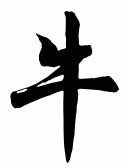 Ox – The Ox is one of the 12-year cycles of animals which appear in the Chinese zodiac related to the Chinese calendar. The earthly branch character denotes the Year of the Ox. In the Vietnamese zodiac, the water buffalo occupies the position of the ox. Ox – The Ox is one of the 12-year cycles of animals which appear in the Chinese zodiac related to the Chinese calendar. The earthly branch character denotes the Year of the Ox. In the Vietnamese zodiac, the water buffalo occupies the position of the ox. |
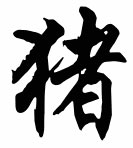 Pig – The Pig, or Boar, is the last of the 12 animals which appear in the Chinese zodiac. The Year of the Pig is associated with the earthly branch Hai. In Chinese culture, the pig is associated with fertility and virility. To bear children in the Year of the Pig is considered to be very fortunate, for they will be happy and honest. Pig – The Pig, or Boar, is the last of the 12 animals which appear in the Chinese zodiac. The Year of the Pig is associated with the earthly branch Hai. In Chinese culture, the pig is associated with fertility and virility. To bear children in the Year of the Pig is considered to be very fortunate, for they will be happy and honest. |
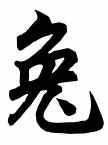 Rabbit – The Chinese Year of the Rabbit is actually the Chinese Year of the Hare, as China has seven native species of hares and no native species of rabbits. The Chinese applied their word for a hare to the first rabbits to be taken to China, and the word is now erroneously back-translated into English as a rabbit. The hare is the fourth animal in the 12-year cycle of the Chinese zodiac. The Year of the Hare is associated with the earthly branch symbol. In the related Vietnamese Zodiac, the cat takes the place of the hare. Rabbit – The Chinese Year of the Rabbit is actually the Chinese Year of the Hare, as China has seven native species of hares and no native species of rabbits. The Chinese applied their word for a hare to the first rabbits to be taken to China, and the word is now erroneously back-translated into English as a rabbit. The hare is the fourth animal in the 12-year cycle of the Chinese zodiac. The Year of the Hare is associated with the earthly branch symbol. In the related Vietnamese Zodiac, the cat takes the place of the hare. |
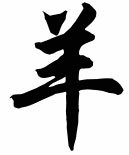 Ram – The Goat (also translated as Sheep or Ram) is the eighth sign of the 12-year cycle of animals which appear in the Chinese zodiac related to the Chinese calendar. The Year of the Goat is associated with the earthly branch symbol. Ram – The Goat (also translated as Sheep or Ram) is the eighth sign of the 12-year cycle of animals which appear in the Chinese zodiac related to the Chinese calendar. The Year of the Goat is associated with the earthly branch symbol. |
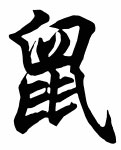 Rat – The Rat is one of the 12-year cycles of animals which appear in the Chinese zodiac related to the Chinese calendar, the Year of the Rat is associated with the earthly branch symbol. In some parts of the world, a year associated with this animal is referred to as Year of the Mouse because the word may be translated to “rat,” “mouse,” or more broadly, “rodent”. Rat – The Rat is one of the 12-year cycles of animals which appear in the Chinese zodiac related to the Chinese calendar, the Year of the Rat is associated with the earthly branch symbol. In some parts of the world, a year associated with this animal is referred to as Year of the Mouse because the word may be translated to “rat,” “mouse,” or more broadly, “rodent”. |
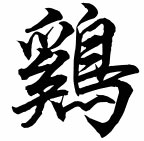 Rooster – The Rooster (also translated as Cock or Chicken) is one of the 12-year cycles of animals which appear in the Chinese zodiac related to the Chinese calendar. The earthly branch character represents the Year of the Rooster. Rooster – The Rooster (also translated as Cock or Chicken) is one of the 12-year cycles of animals which appear in the Chinese zodiac related to the Chinese calendar. The earthly branch character represents the Year of the Rooster. |
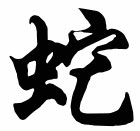 Snake – The Snake (also known as the Serpent) is one of the 12-year cycles of animals which appear in the Chinese zodiac related to the Chinese calendar. The Year of the Snake is associated with the earthly branch symbol. Snake – The Snake (also known as the Serpent) is one of the 12-year cycles of animals which appear in the Chinese zodiac related to the Chinese calendar. The Year of the Snake is associated with the earthly branch symbol. |
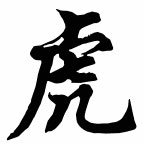 Tiger – The Tiger is one of the 12-year cycles of animals which appear in the Chinese zodiac related to the Chinese calendar. The Year of the Tiger is associated with the earthly branch symbol. Tiger – The Tiger is one of the 12-year cycles of animals which appear in the Chinese zodiac related to the Chinese calendar. The Year of the Tiger is associated with the earthly branch symbol. |
The Symbols of the Five Universal Elements
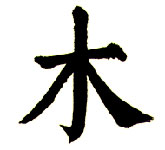 The Wood Element is the energy associated with regeneration, renewal, and growth. The season of Spring expresses this rebirth as the blooming of new life, the continual movement of Chi.The Wood Element expresses the vision of life, direction, and movement. The Wood Element is the energy associated with regeneration, renewal, and growth. The season of Spring expresses this rebirth as the blooming of new life, the continual movement of Chi.The Wood Element expresses the vision of life, direction, and movement. |
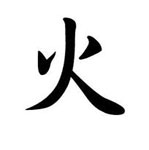 Fire is the spark of life. It warms and circulates the blood and Chi. It represents the fullest expression of yang. Fire is the spark of life. It warms and circulates the blood and Chi. It represents the fullest expression of yang. |
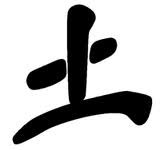 Earth – In ancient Chinese texts, the Earth Element was often depicted as the center with the other four elements surrounding it. Earth provides nourishment and shelter for all life. The Earth Element and its two officials, the Spleen and Stomach, are the organs that support the nourishing processes in body, mind, and spirit. The stomach takes in nourishment; the spleen distributes the energy obtained from foods throughout the body. Earth – In ancient Chinese texts, the Earth Element was often depicted as the center with the other four elements surrounding it. Earth provides nourishment and shelter for all life. The Earth Element and its two officials, the Spleen and Stomach, are the organs that support the nourishing processes in body, mind, and spirit. The stomach takes in nourishment; the spleen distributes the energy obtained from foods throughout the body. |
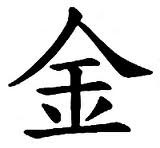 Metal – The Metal Element supports breathing, inspiration, and respiration, the breath of life, as well as the release of impurities, out with the old and in with the new. Metal – The Metal Element supports breathing, inspiration, and respiration, the breath of life, as well as the release of impurities, out with the old and in with the new. |
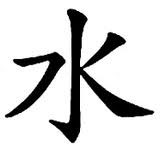 Water – Water is the foundation of life. It expresses stillness, power, cleansing, and refreshment. Water supports every cell in the body. Without fresh, pure water in our bodies and in our environment, we compromise the vital integrity of our health. Water – Water is the foundation of life. It expresses stillness, power, cleansing, and refreshment. Water supports every cell in the body. Without fresh, pure water in our bodies and in our environment, we compromise the vital integrity of our health. |
 Bamboo – An intrinsic part of the Chinese culture for ages, Bamboo is symbolic of longevity, youth, strength, suppleness, flexibility, adaptability, endurance, good luck, prosperity, virtue and traditional values. The Chinese associate its deep roots with resoluteness, the tall, clean and evergreen stem with honour and chastity, and the hollow interior with simplicity and Bamboo – An intrinsic part of the Chinese culture for ages, Bamboo is symbolic of longevity, youth, strength, suppleness, flexibility, adaptability, endurance, good luck, prosperity, virtue and traditional values. The Chinese associate its deep roots with resoluteness, the tall, clean and evergreen stem with honour and chastity, and the hollow interior with simplicity and
Another very important Chinese symbol is the Ying-Yang symbol. In Chinese philosophy, the concept of yin-yang, generally referred to in the West as (yin and yang) is used to describe how polar or seemingly contrary forces are interconnected and interdependent in the natural world and how they give rise to each other in turn. Opposites thus only exist in relation to each other. The concept lies at the origins of many branches of classical Chinese science and philosophy, as well as being a primary guideline of traditional Chinese medicine and a central principle of different forms of Chinese martial arts and exercises, such as Baguazhang, Taijiquan (tai chi), and Qigong (Chi Kung) and of I Ching divination. Many natural dualities – e.g. dark and light, female and male, low and high, cold and hot – are thought of as manifestations of yin and yang (respectively). |
 Goldfish – Goldfish is associated with wealth, affluence and abundance. In Chinese culture, the Goldfish is a trendy symbol and may be worn embroidered on clothes to encourage the flow of riches and comforts into life. The symbol is often used alongside the lotus flower as a New Year image. Together, they are supposed to be the harbingers of prosperity as well as harmony. Goldfish – Goldfish is associated with wealth, affluence and abundance. In Chinese culture, the Goldfish is a trendy symbol and may be worn embroidered on clothes to encourage the flow of riches and comforts into life. The symbol is often used alongside the lotus flower as a New Year image. Together, they are supposed to be the harbingers of prosperity as well as harmony. |

